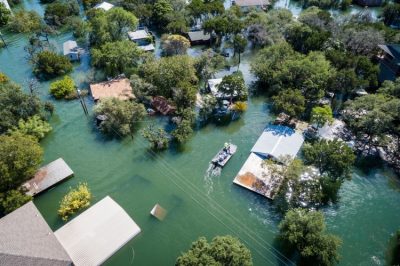Climate Change & Rising Sea Levels

The world’s oceans, streams, and waterways play important roles in preserving the health and vitality of our global ecosystems: they act to store carbon, they affect air temperature, and act as rich sources of biodiversity. Today we find that their health is in rapid decline, and many people do not recognise how extensive and widespread the damage, nor do they always recognize the role that humans play in this decline. It is important that we all educate ourselves on what is happening to our local underwater environments and understand the impacts of industrialised farming and fishing on these resources.
Bill and I are currently based in a small village called Godalming in Surrey, about 45 minutes by train from London Waterloo Station. The River Wey runs through an open field at the end of our garden and is a tributary of the River Thames in south east England. The Wey and Godalming Navigations were built in the 17th and 18th centuries, to create a navigable route from Godalming to the Thames.
Just over 60 years after it was declared "biologically dead," England's River Thames had been hailed as an environmental success. But while much of the effluent, chemicals and heavy metals that used to pollute the river are gone, microplastics have taken their place. One source of acidification in our rivers and oceans is plastics breaking down. When compared to global estimates of microplastic pollution, the Thames has very high levels.
That coupled with the fact that global warming is causing sea levels to rise will have effects around the coast of the UK, from major cities such as London to many smaller villages and towns. One place which is in the frontline of present and future sea level rise is London, the capital of the UK.
Why is the sea level rising?
Global sea-level rise is caused by the melting of ice sheets in Greenland and Antarctica and the expansion of seawater as it heats up (Humphreys, 2019a). Over the period 1901-2010 global average sea levels rose 0.19 metres (IPCC, 2013). Predictions for future sea-level rise vary. The impact on levels of sea-level rise in different locations vary.
London has always been vulnerable to the sea as the Thames is tidal and high tides bring increased water levels to the river in the city. The high tide level of the Thames has risen over time and the risk from tidal surges has increased. Tidal surges are caused by a combination of a high tide and strong winds which push water towards the land and up rivers. They affect London when a surge in the Atlantic, funnels down the North Sea, up the English Channel, and then up the Thames Estuary (Carbon Brief, 2014). From the evidence of the London Bridge high water mark, we know that the level has risen since 1780 by over 1.5 metres (Carbon Brief, 2014). Alongside ice melt increasing seawater volume other factors have important impacts on the changing sea level in London.
In 1953 there was a catastrophic tidal surge. The flooding from the surge caused huge damage and cost 307 lives (RGS, 2020). It also caused an estimated £50 million (£5 billion in today’s money) (RGS, 2020) in damage and lost income to the city. Rising sea levels, due to climate change, are predicted to be a threat to 1.2 million people in the capital by 2050. The economic importance of London is a central factor in the government response to this issue.
Flooding, flooding and more flooding on the way
Climate change will increase the intensity of rainstorms leading to flash floods from tributaries and the drainage system; bringing more frequent intense winter rainfall leading to a higher and more frequent threat of flooding from the Thames and its tributaries.
The problems caused by rising global temperatures are predicted to include heatwaves, flooding, food and water shortages and blackouts by mid-century, if urgent action to curb greenhouse gases is not undertaken.
In terms of the area we are currently based, Surrey, England, there are no large-scale agricultural practices. It is largely a residential county being so close to London and is termed a ‘bedroom town’. Most of the problems occurring in this immediate area are caused by activities upstream in the larger Thames basin, which includes increased risks of flooding and pollution of rivers and canals due to agricultural practices.
The latest from the local councils here to combat climate change are as follows:
- Embedding sustainability:they will include environmental considerations in decision making across council services.
- Climate change resilience:they are working with partners to build the resilience of our communities and estate to climate impacts.
- Operations and estate efficiency: they will make their buildings, operations and services as resource efficient and low cost as practicably possible.
- Procurement:they are working with suppliers to reduce the environmental impact of the goods and services they deliver for us and reduce our supply chains exposure to environmental risks.
- Air quality: they will reduce emissions from transport and improve air quality across the county through sustainable transport options.
As always, there is not one mention about dietary change. Adopting a wholefood plant-based diet is the one thing each of us can do to stop the devastation and destruction of our planet.
In good health


